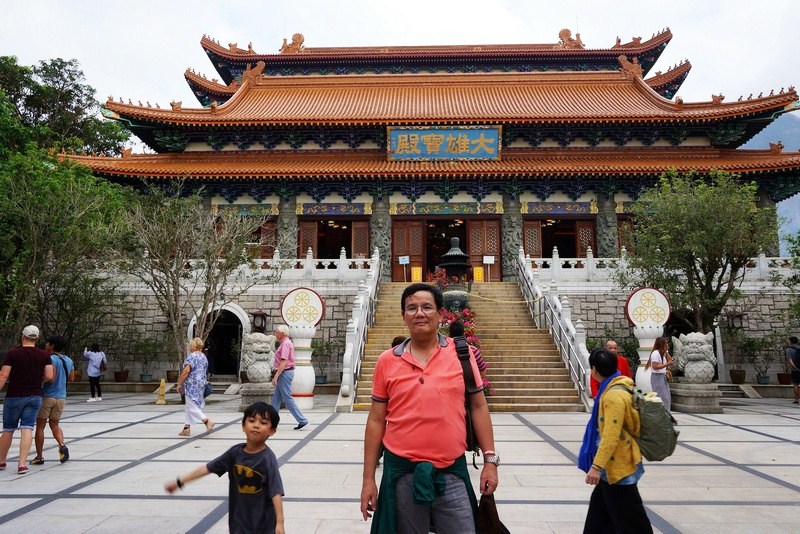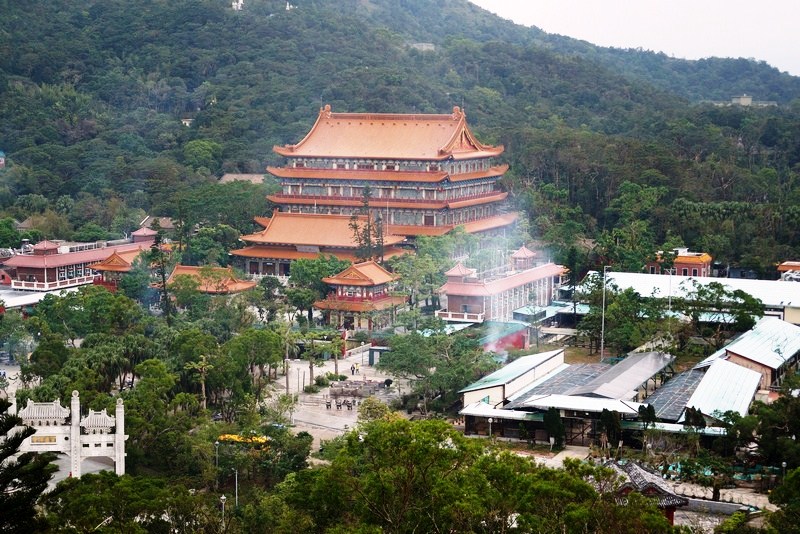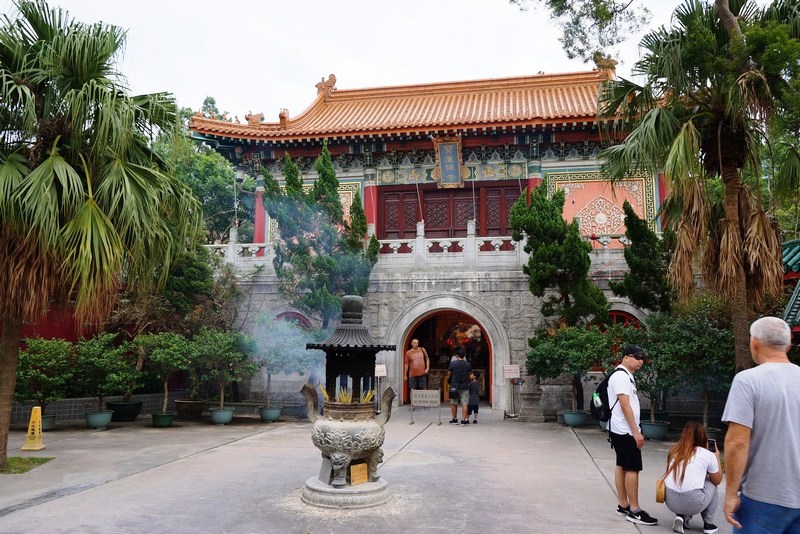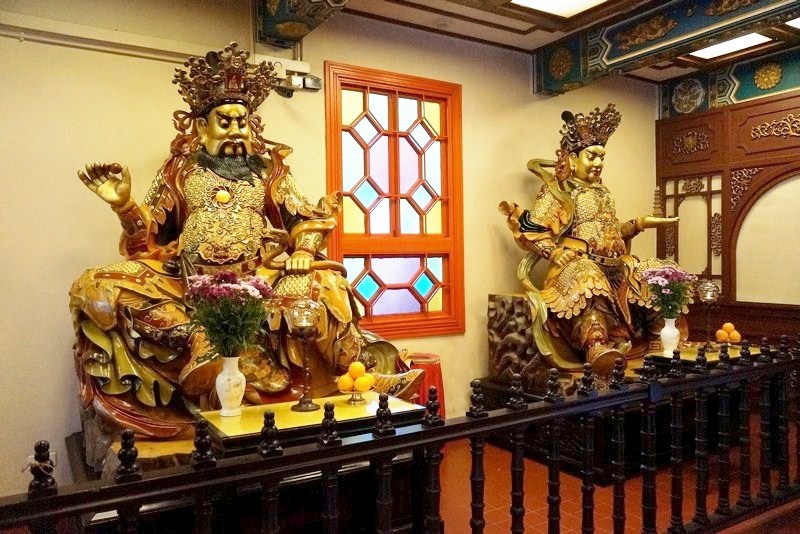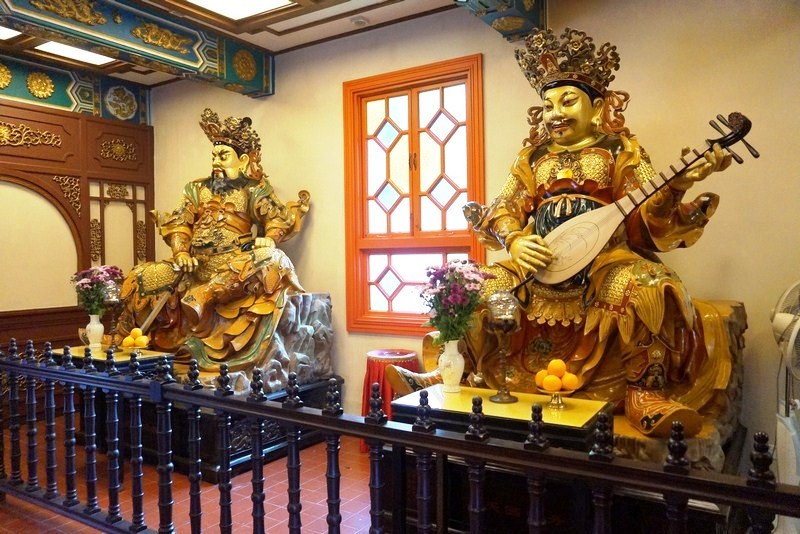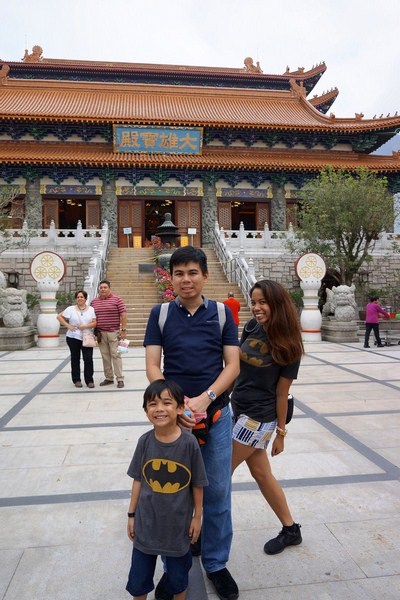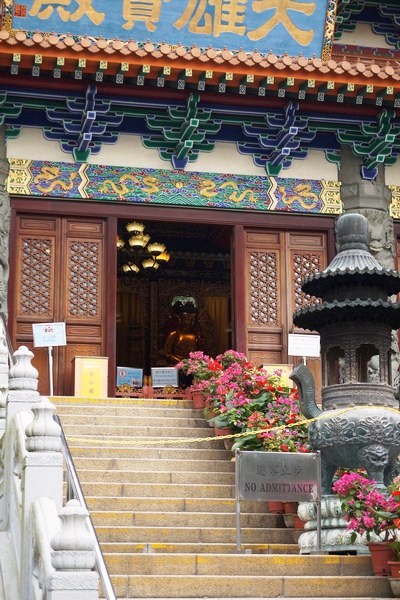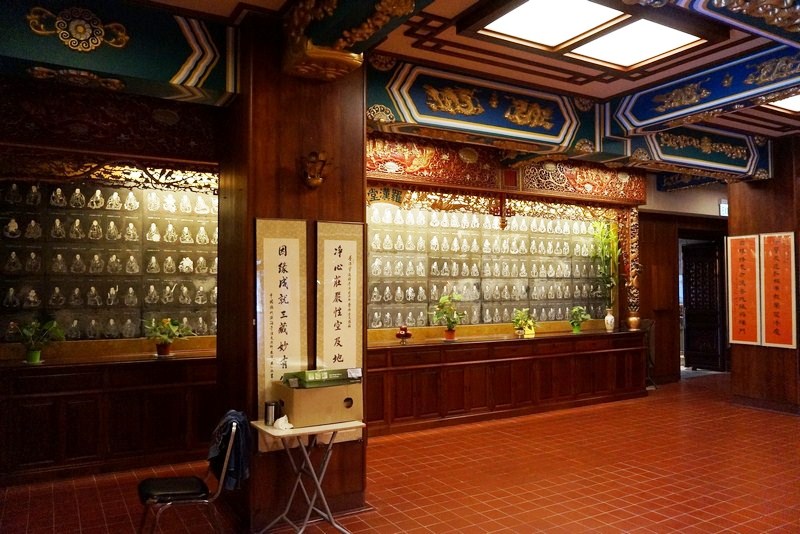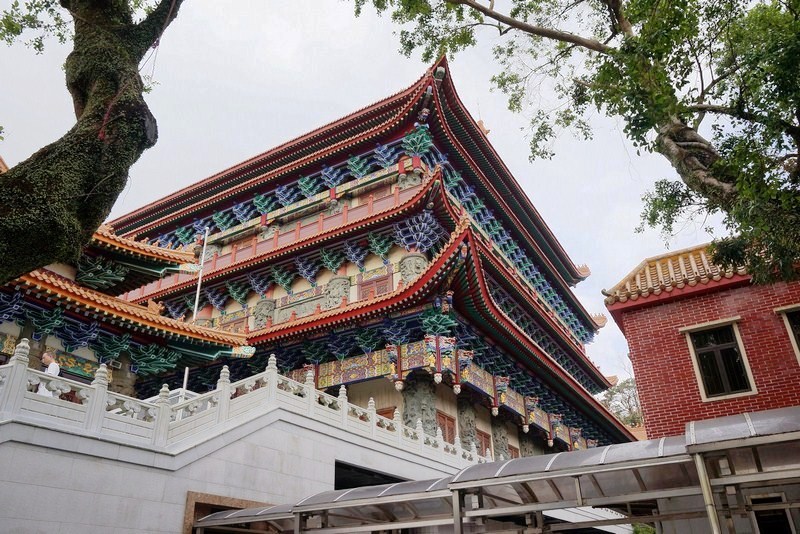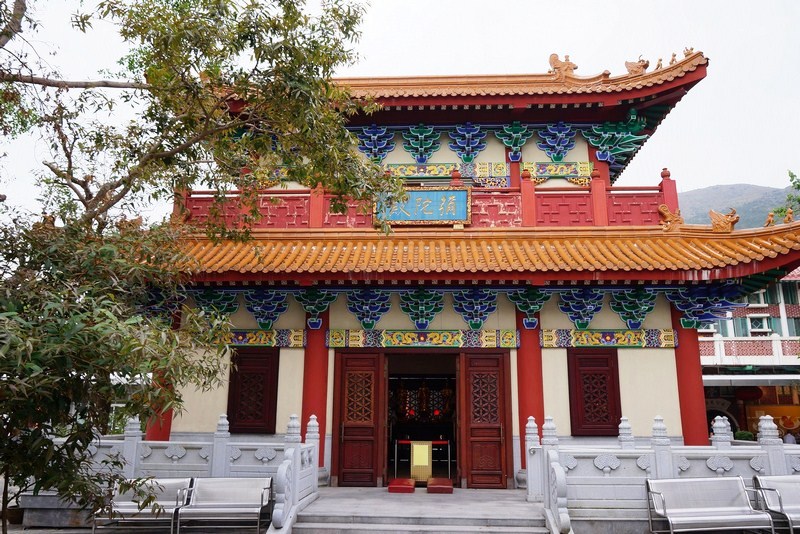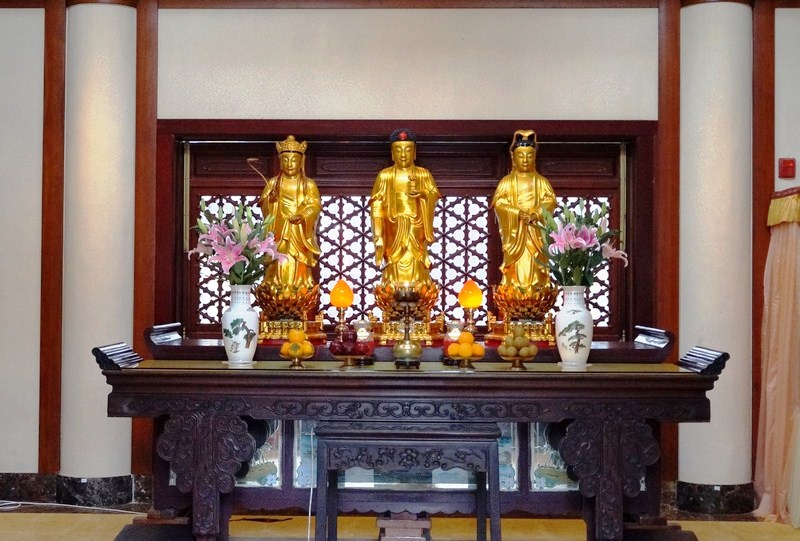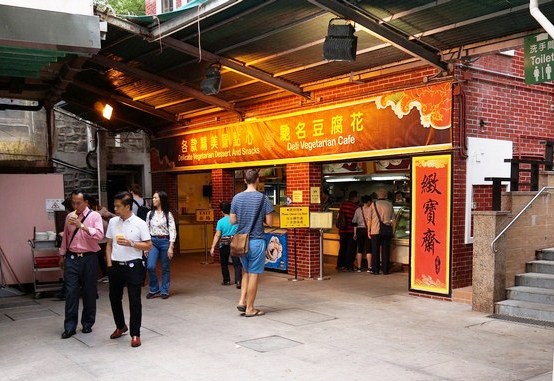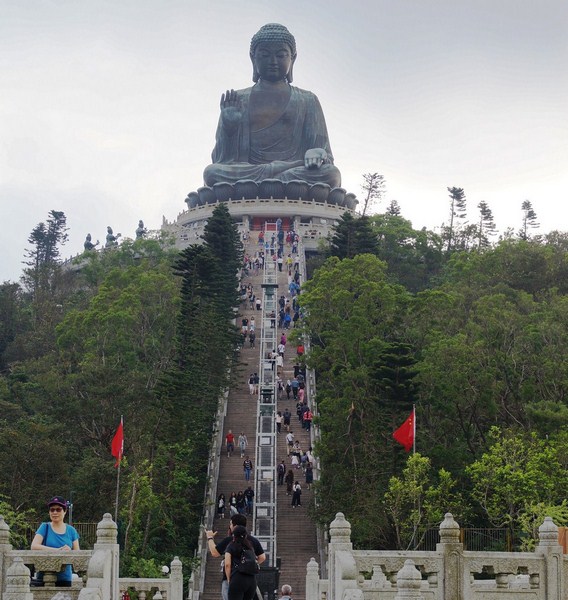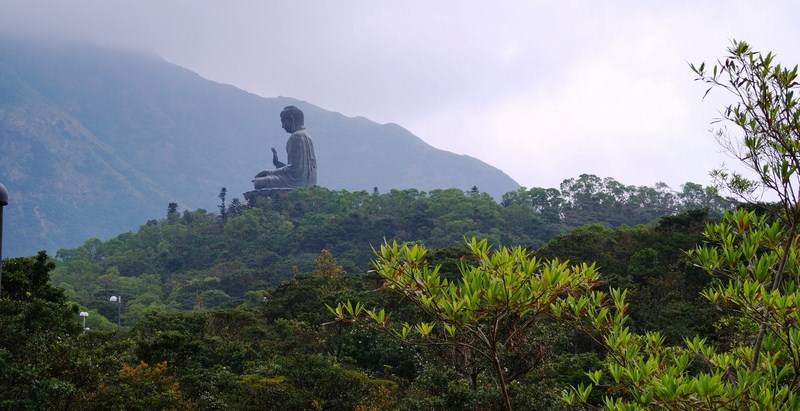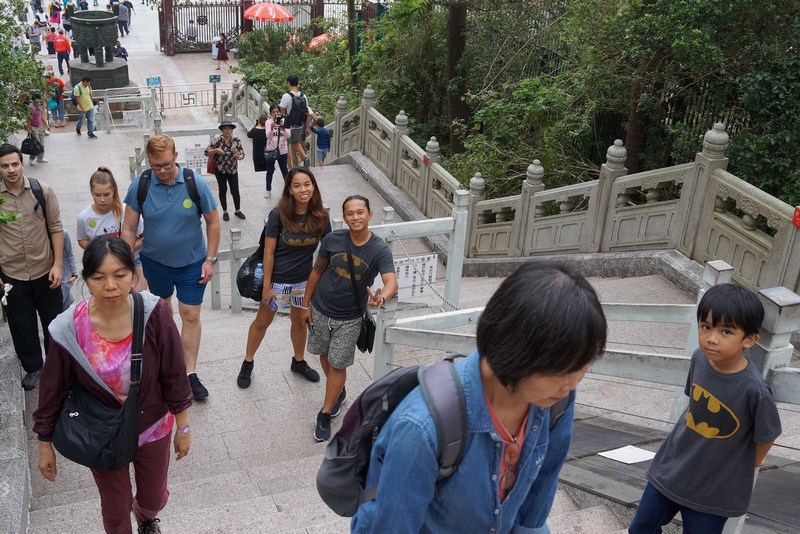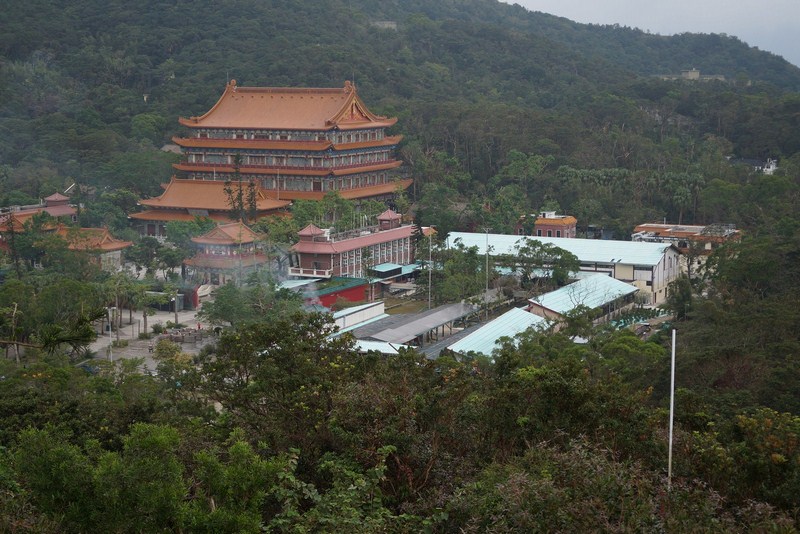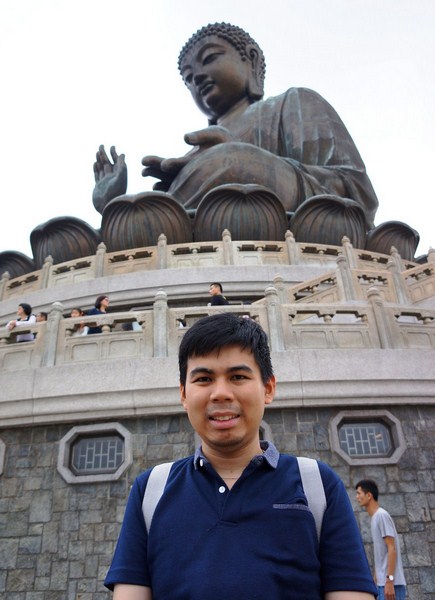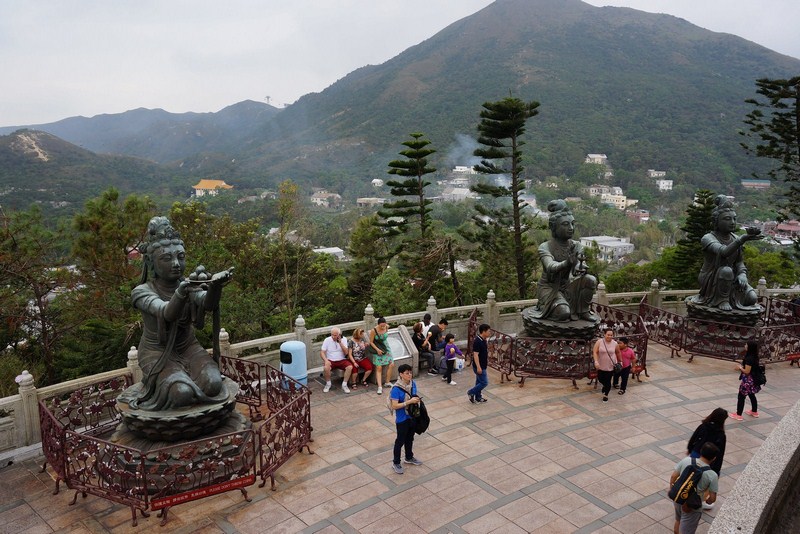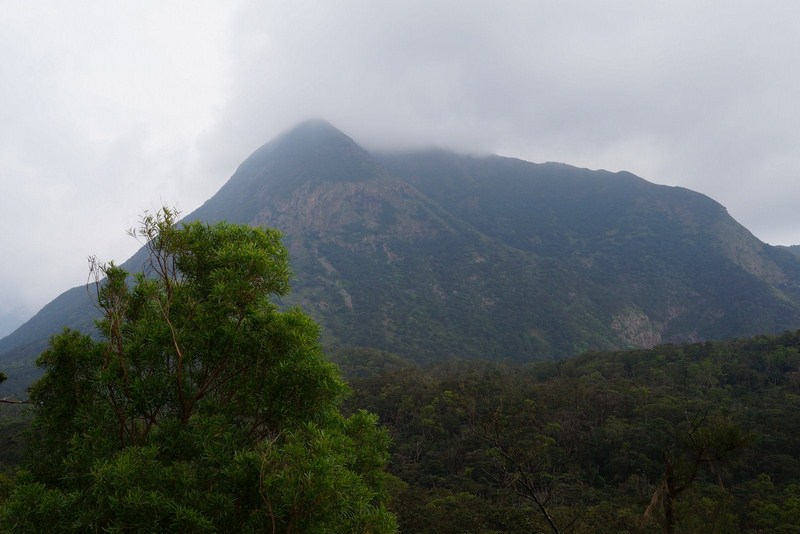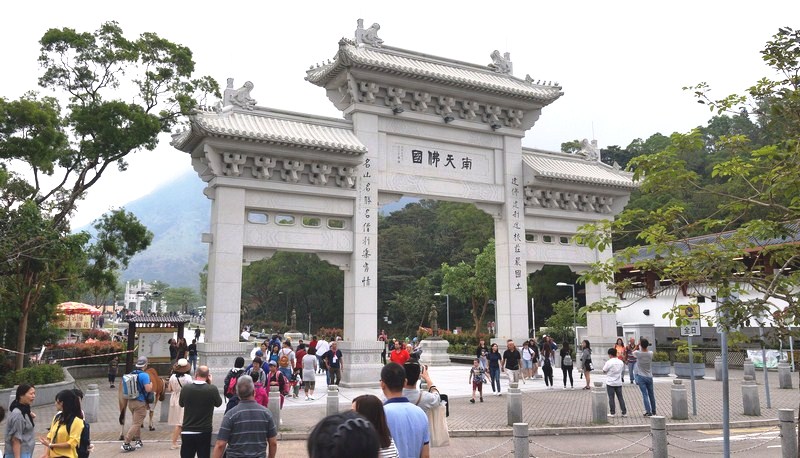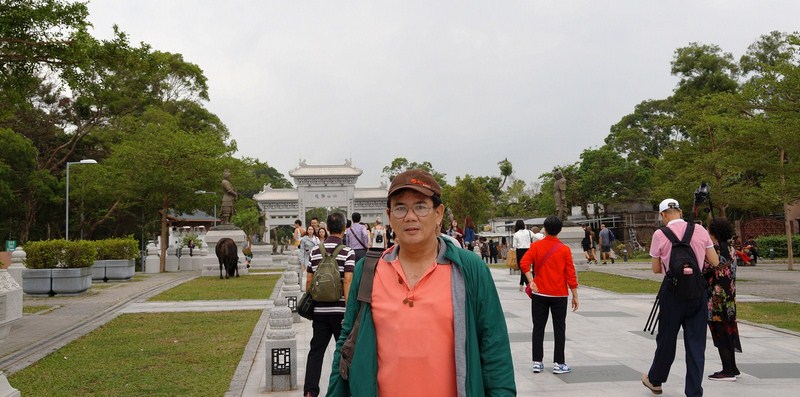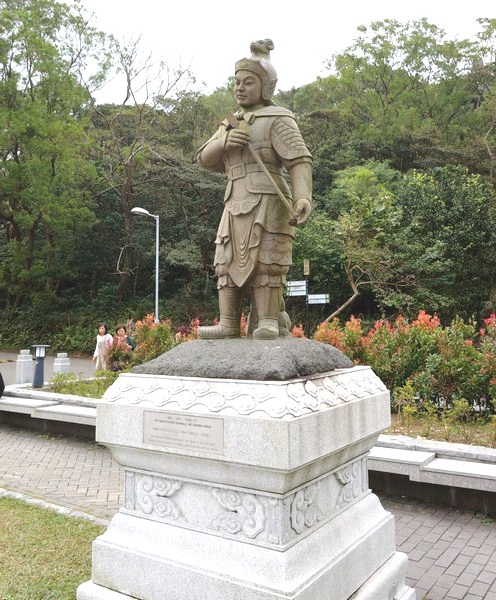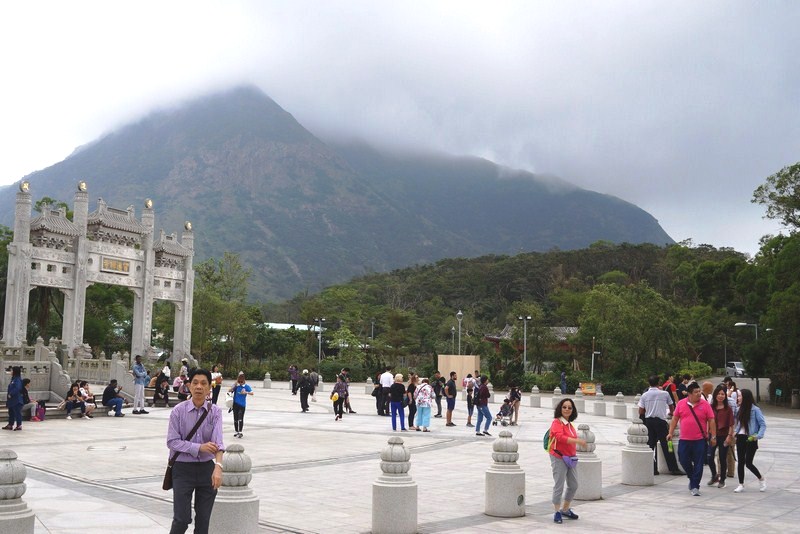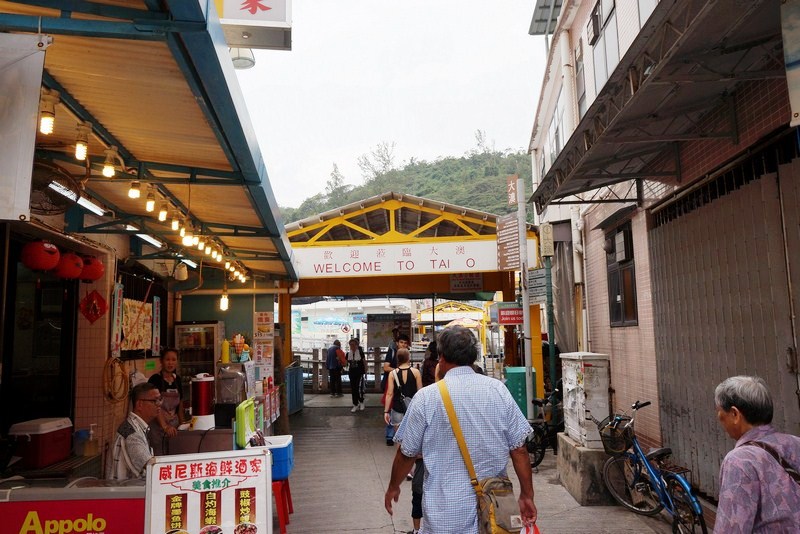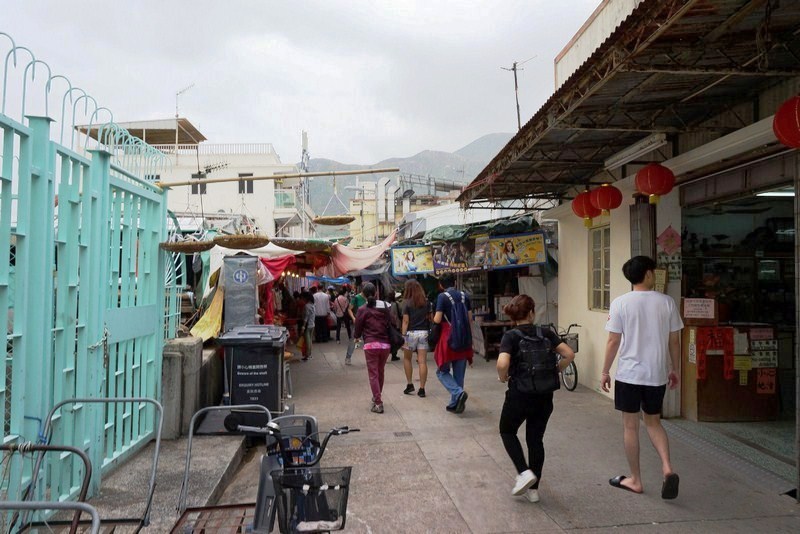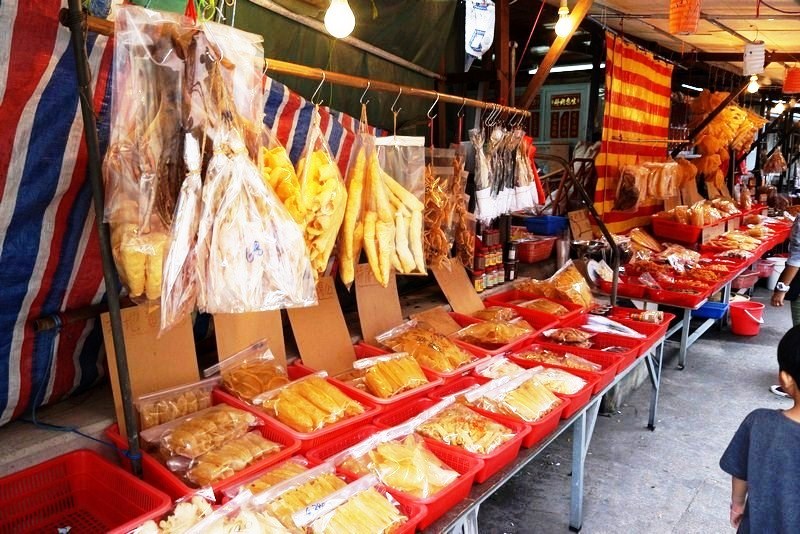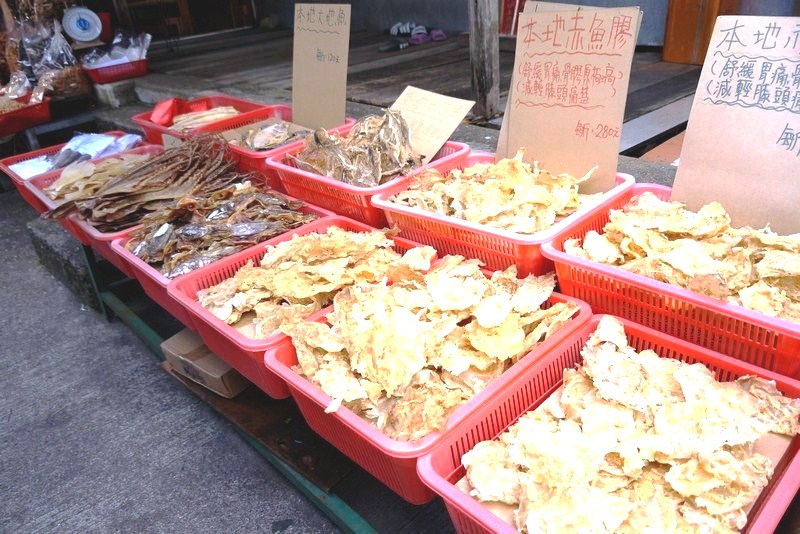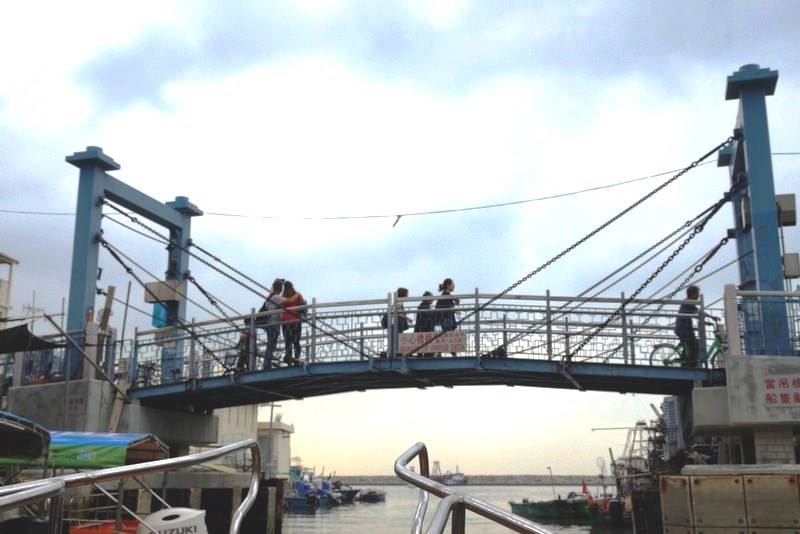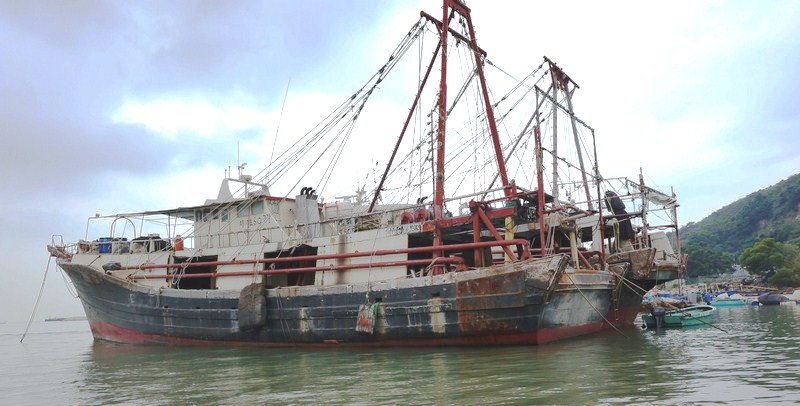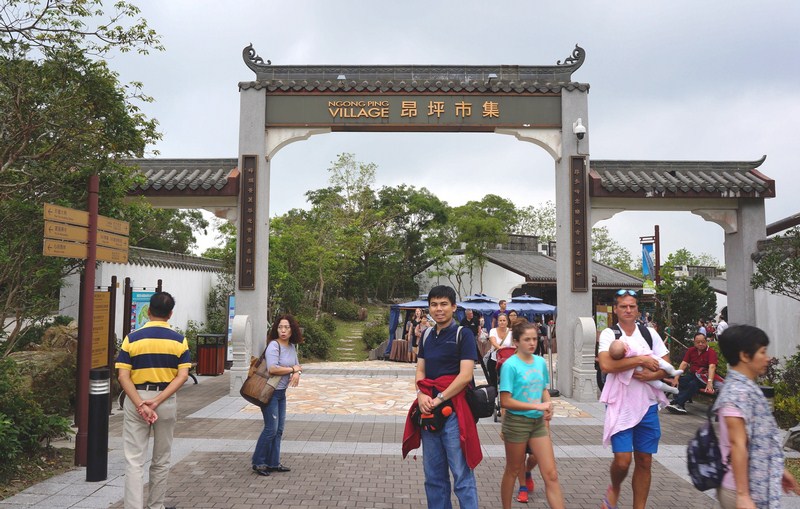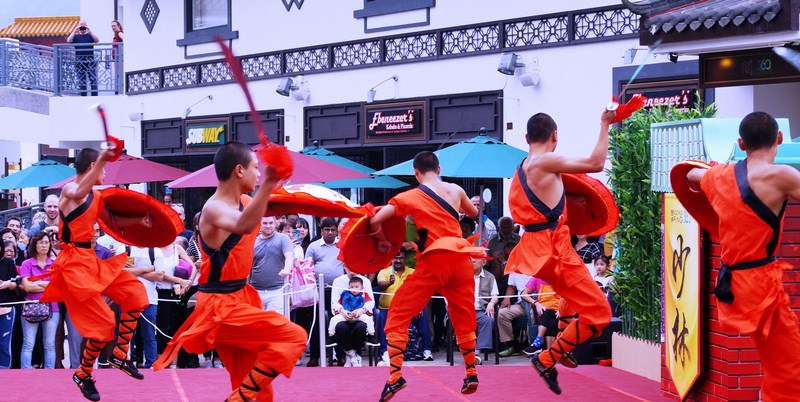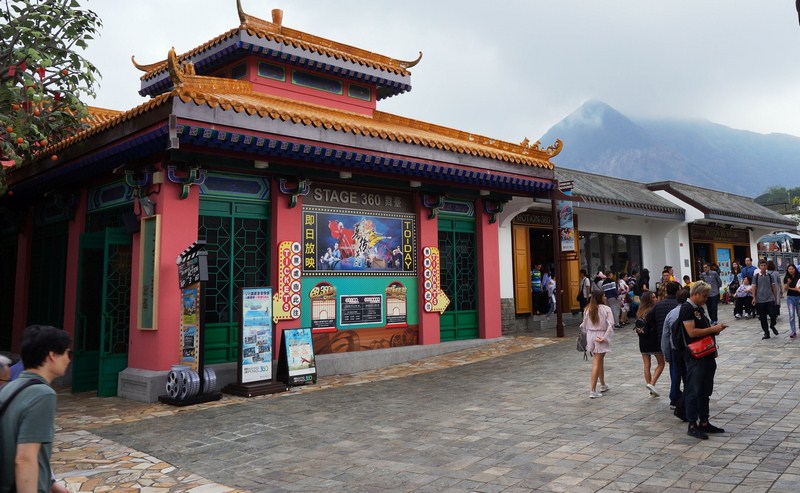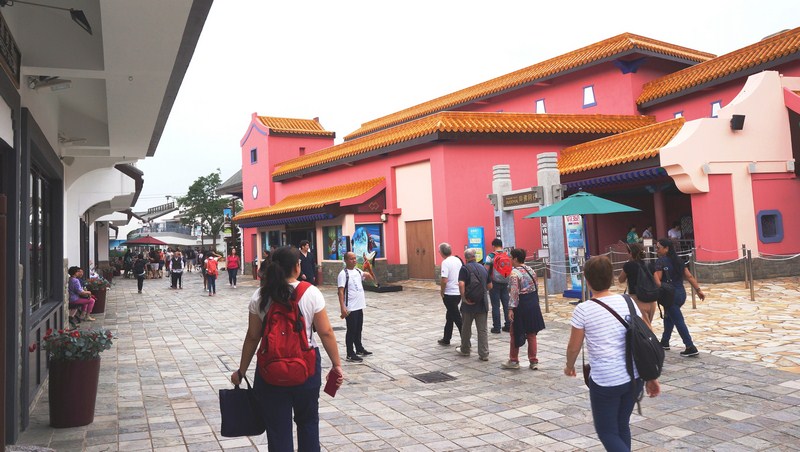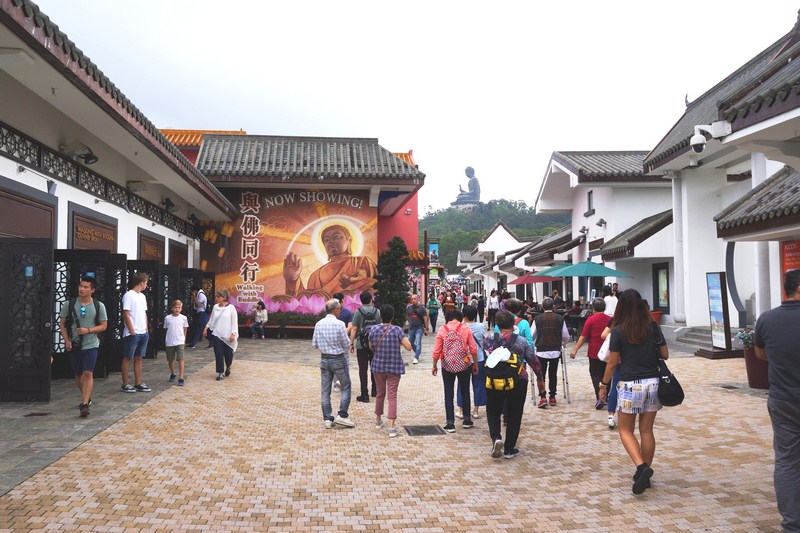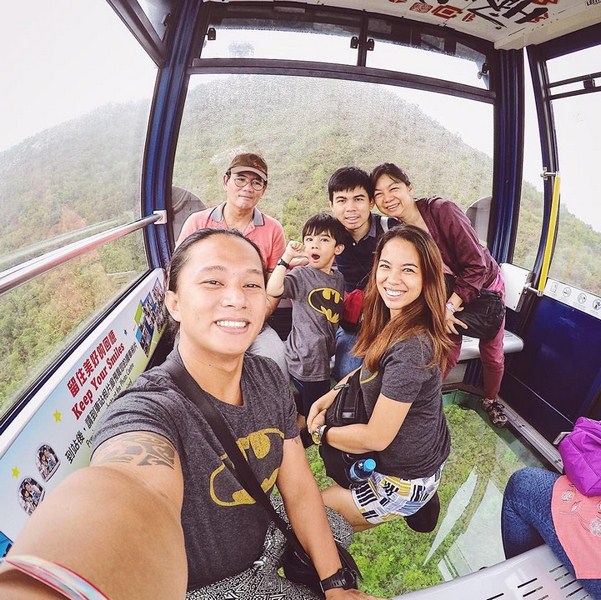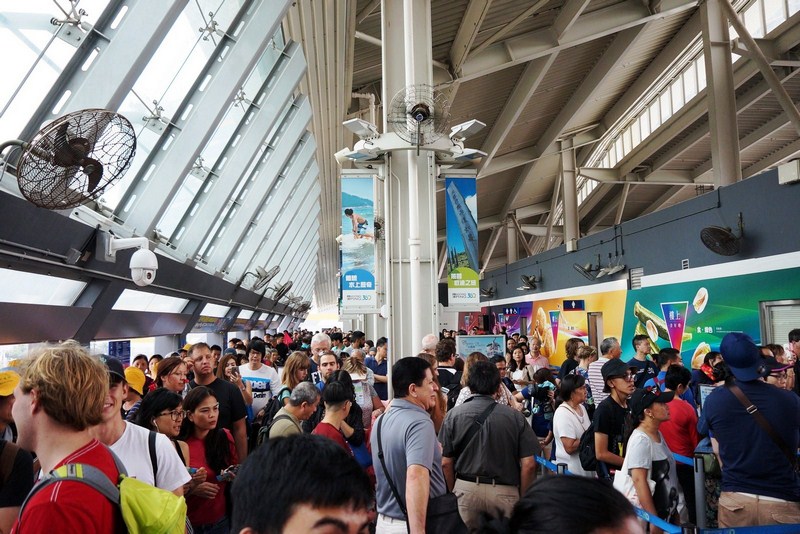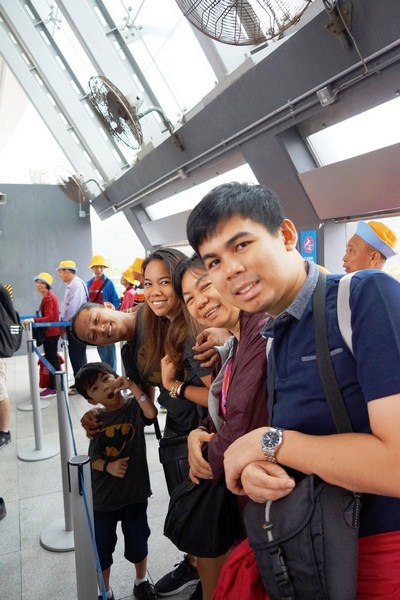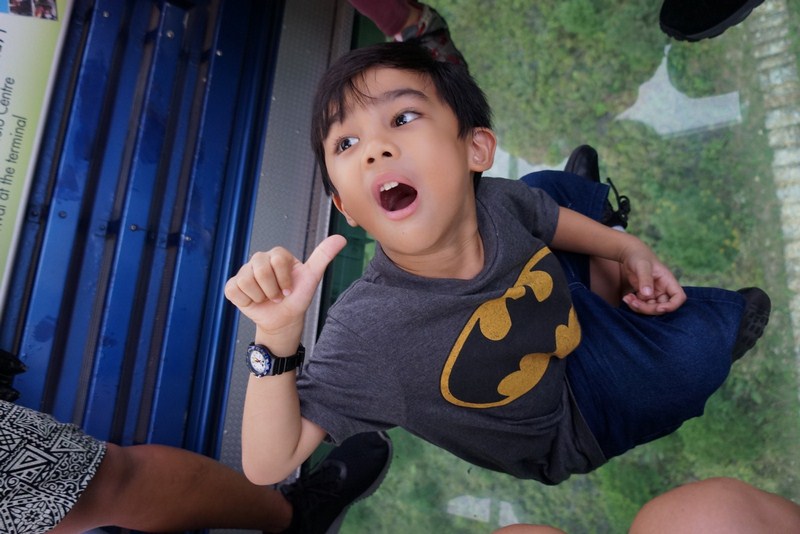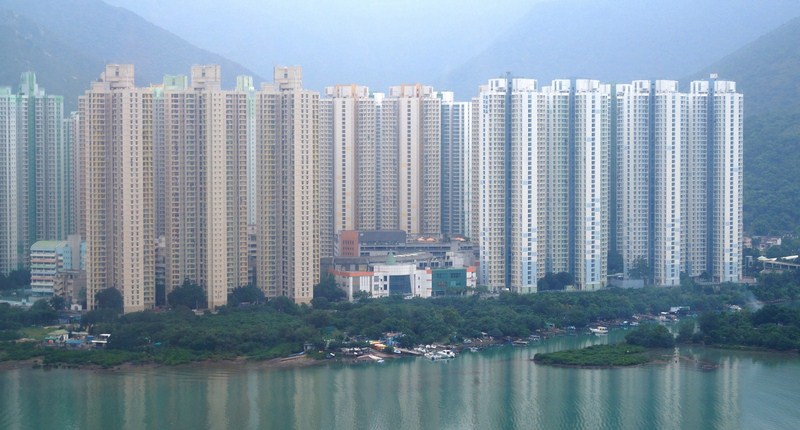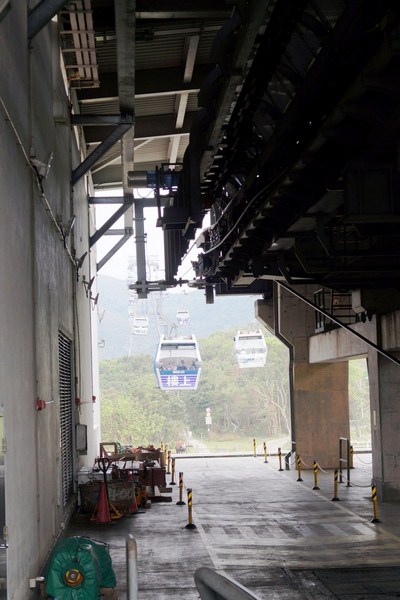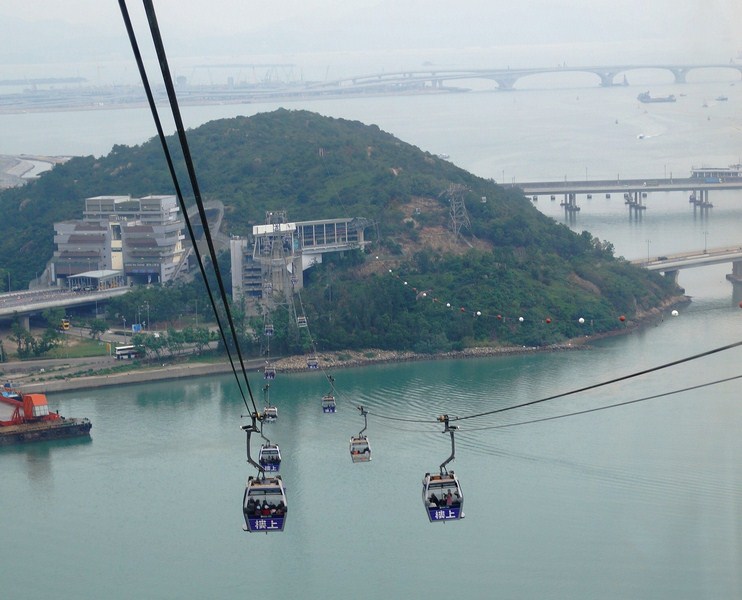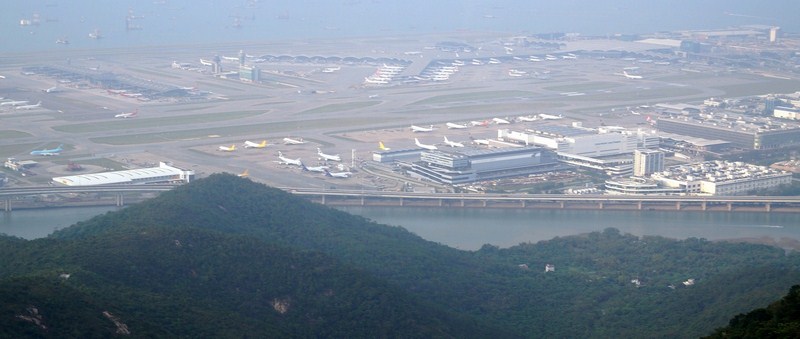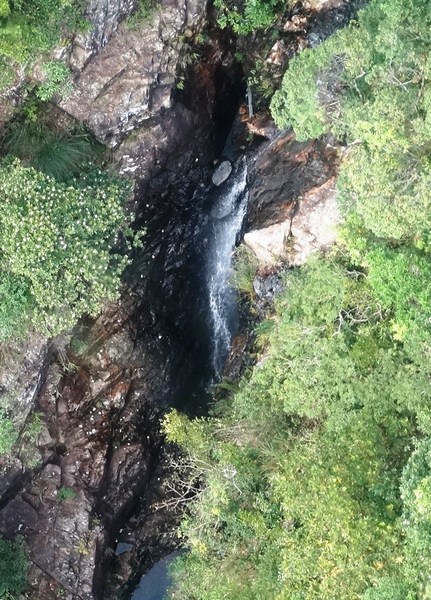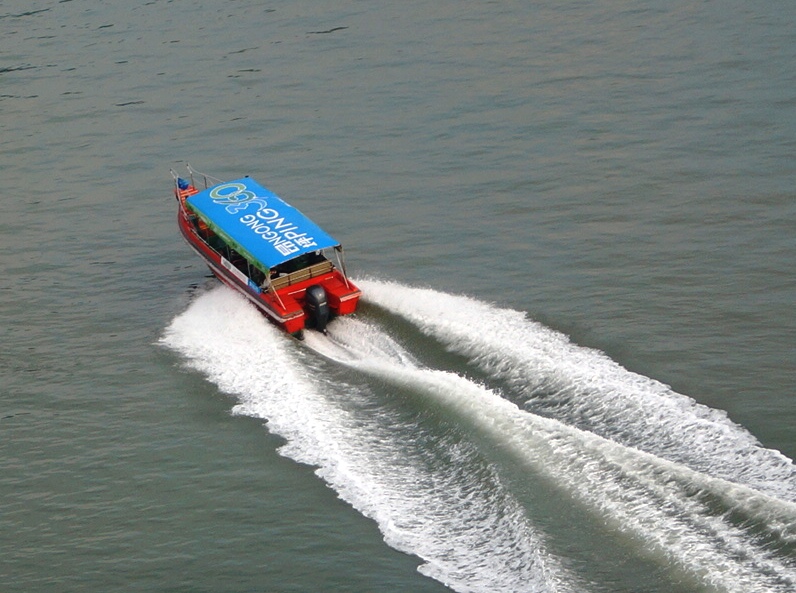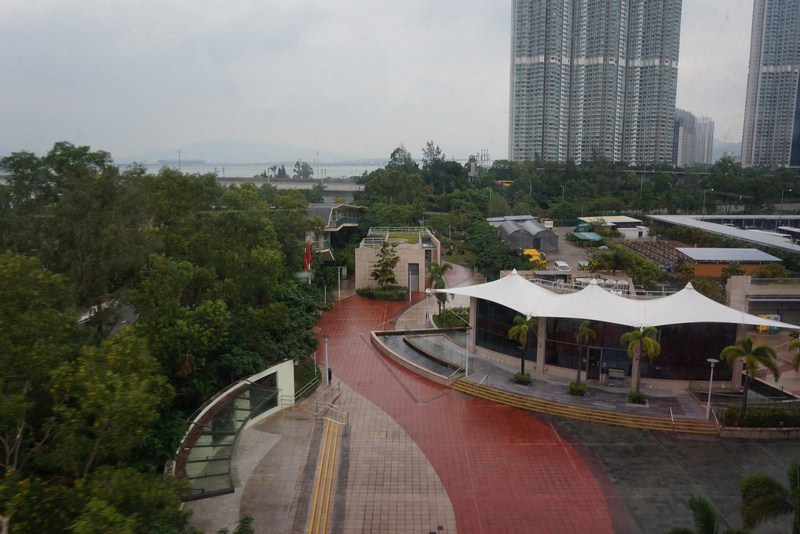After our visit to the Tian Tan Buddha (Big Buddha), we proceeded to the nearby Po Lin Monastery, a Buddhist monastery located on level Ngong Ping Plateau, between the lush, green Lantau Peak and Lei Nak Peak. The wooden bracelets sold near the Big Buddha statue (an extension of the monastery) are made at Po Lin (translated as “precious lotus”).
Check out “Tian Tan Buddha“
Founded in 1906 by three monks visiting from Jiangsu Province on the Chinese mainland, it was initially known simply as “The Big Hut” (大茅蓬 Tai Mao Pung) but was renamed to its present name in 1924.
In 1918, three nuns ordained at this monastery established a private nunnery, dedicated to Guanyin (the Goddess of Mercy), called Chi Chuk Lam (紫竹林) on Lantau’s Lower Keung Hill (下羌山). In the 1950s, there were about 20 jushi and nuns residing there but, today, only an elderly abbess remains. On June 2013, the site was inscribed in the UNESCO World Heritage List.
We spent some time admiring the architecture of the structures of this orderly Buddhist monastery complex which houses many Buddhist scriptures.
Its many halls (Da Xiong Bao Dian, the Maitreya Hall, the Hall of Ti-tsang Bodhisattva, the Weituo Hall, the Banruo Hall, the Sutra-Collection Hall) and prominent architectural buildings and structures sit tightly on the north-eastern to south-western axis, overlooking the South China Sea. On the south side of the axis are the Po Lin Hall and the facility for ceremonial and religious activities.
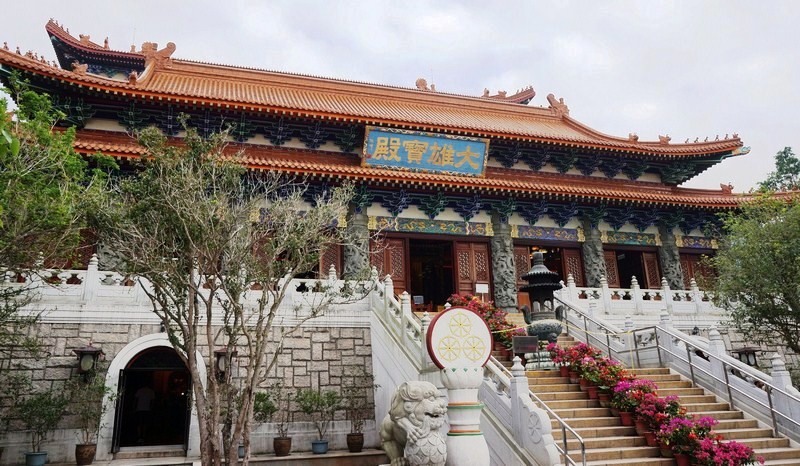
Hall of Bodhisattva Skanda. On the upper level is the Hall of Great Hero while on the lower level is the Hall of Arhats
San Men (Mountain Gate) leads up to the Hall of Bodhisattva Skanda, the Main Shrine Hall of Buddha, and the Grand Hall of Ten Thousand Buddhas. In symmetrical arrangements on the flanks are the Bell Tower (houses a 1,000 kg. bronze bell) and the Drum Tower, the Hall of Ksitigarbha Bodhisattva, the Meditation Hall, the Dining Hall and the Sangha Hall.
These edifices enclose and create roomy space and airy courtyards. The Hall of Ti-tsang Bodhisattva houses an approximately 200 kg. (441 lb.) bronze statue of Ti-tsang Bodhisattva.
In its effort in spreading Buddhism and in moving forward towards globalization, the monastery has changed its architectural concept from local southern China to that of Beijing palatial design. The seven-span Hall of Bodhisattva Skanda, completed in 1970, adopted the architectural design of the Ming and Qing’s Dynasty palaces.
Its double-eaved gable roof, made of yellow-glazed tiles, has a ridge decorated with zoomorphic ornaments, dragons, phoenixes and animal patterns. Coiled granite dragons, carved in the Minnan style, can be seen on the front and the back of the hall.
On the other hand, the incredibly ornate Grand Hall of Ten Thousand Buddhas, which went on the drawing board in 2000 and was completed in 2014, adopted the classical architectural concepts of the Song Dynasty.
Covering an area of more than 6,000 sq. m., it now enshrines more than 100 statues and has a shrine hall, an exhibition hall, a meditation hall, an abbot’s chamber, a scripture library and other multi-functional facilities.
The Great Hall of Treasure (Da Xiong Bao Diane) enshrines three bronze statues of the Buddha (Sakyamuni, Dipamkarara and Maitreya, representing his past, present and future lives). Many visitors here join in praying and giving offerings at the temple.
For those who fancy typical, good quality vegetarian cuisine, the monastery also has a vegetarian kitchen where a multi-course lunch can cost you up to HK$138. Dishes are served at the dining hall and at the Fat Ho Memorial Hall. Opposite the dining hall, snacks such as salty dimsum, steamed cakes, spring water bean curd, glutinous rice dumplings with mango filling and noodles are sold.
Near the giant Tian Tan Buddha and the monastery is the Ngong Ping Village and Ngong Ping 360, a gondola lift running between Tung Chung and Ngong Ping.
Check out “Ngong Ping 360 and Ngong Ping Village“
Po Lin Monastery: Ngong Ping, Lantau Island, Hong Kong. Tel: +852 2985 5248. Fax: +852 2985 5600. E-mail: info@plm.org.hk. Website: www.plm.org.hk. Open daily, 8AM to 6PM. The Vegetarian Kitchen is open daily from 11:30AM to 4:30 PM (7 PM on Saturdays, Sundays and public holidays).

